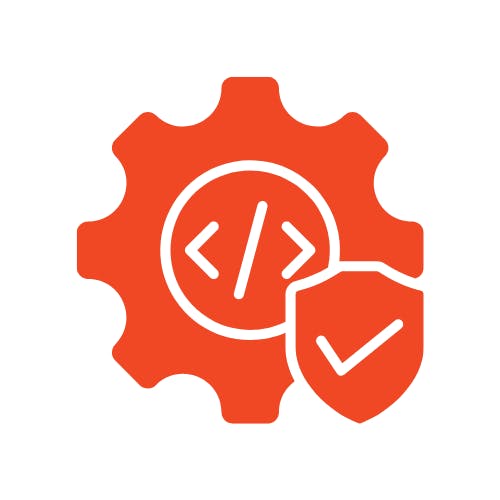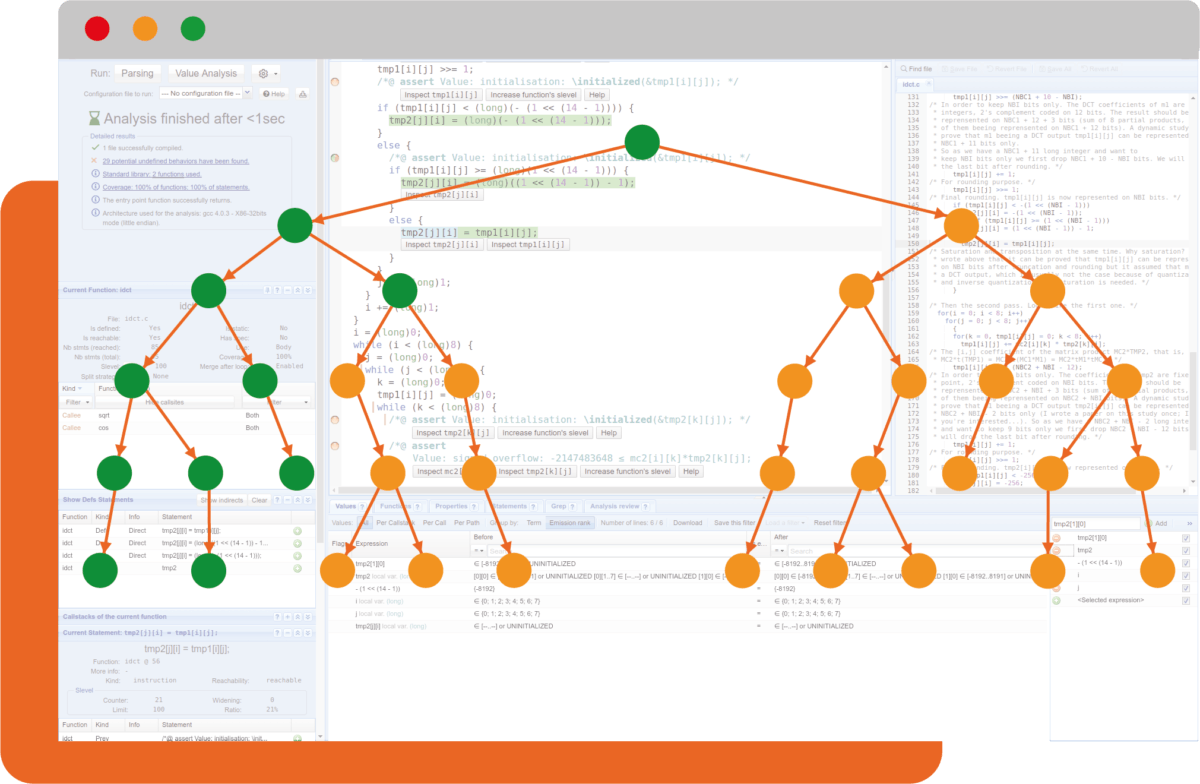How TrustInSoft Ensures Memory Safety Through Data and Control Flow Analysis

Guarantee Memory Safety With Data and Control Flow Analysis
In the realm of software security, ensuring the integrity and reliability of code is paramount, especially for safety-critical applications. Data flow and control flow analysis stand as cornerstones in this endeavor, serving as critical techniques for detecting vulnerabilities that could potentially compromise system security. These analyses meticulously dissect how data values propagate through a program and map the intricate pathways of program execution. By understanding these dynamics, developers can proactively identify and mitigate potential security flaws. TrustInSoft Analyzer harnesses the power of data flow and control flow analysis, augmented by formal methods, to deliver mathematically proven memory-safe software. This innovative approach guarantees the absence of runtime errors and memory vulnerabilities, empowering developers to construct applications with unparalleled reliability and security. The ability to ensure memory safety is increasingly important as software is deployed in more embedded and safety critical systems.
Trial TrustInSoft Analyzer
Unlocking Software Security: Data Flow Analysis Explained
Data flow analysis meticulously examines how data values propagate through a program's execution. It meticulously tracks the definition, usage, and modification of data elements to pinpoint potential security concerns, such as tainted data, where external, untrusted input could unduly influence critical operations. TrustInSoft Analyzer leverages sophisticated data flow analysis techniques to identify vulnerabilities like buffer overflows and format string vulnerabilities. For instance, by meticulously tracing the flow of user-supplied input, the analyzer can ascertain whether it governs the size of a buffer, potentially triggering a buffer overflow if validation is inadequate. TrustInSoft Analyzer's comprehensive data flow analysis capabilities extend to detecting a broad spectrum of potential exploits stemming from insecure data handling practices, ensuring robust protection against potential threats. This capability is crucial for preventing attackers from exploiting vulnerabilities.

Mapping Execution Pathways: A Deep Dive Into Control Flow Analysis
Control flow analysis hones in on the execution paths a program might traverse. It maps out the sequence of instructions executed, unveiling potential vulnerabilities tied to the program's structural logic. TrustInSoft Analyzer employs control flow analysis to uncover issues like dead code (code segments that never execute), infinite loops, and unreachable code, all of which may indicate logic errors or underlying security flaws. By meticulously deciphering the code's execution path, the analyzer can identify conditions where critical security checks might be bypassed or unexpected states might arise. Advanced control flow techniques empower TrustInSoft Analyzer to expose subtle vulnerabilities that traditional analysis methods might easily miss. TrustInSoft Analyzer includes automated slicing, greatly improving the usability of the control flow analysis.

Formal Methods: The Foundation of TrustInSoft Analyzer
TrustInSoft Analyzer sets itself apart through the application of formal methods. Unlike traditional static analysis, which often relies on heuristics and pattern matching, formal methods employ mathematical proofs to rigorously verify the absence of bugs and vulnerabilities. This rigorous approach provides a higher degree of assurance, effectively eliminating false negatives and delivering a complete and accurate analysis of the code. Formal methods significantly enhance both data flow and control flow analysis by providing a robust foundation for reasoning about a program's behavior. This ensures that all conceivable execution paths and data flows are meticulously considered, leading to more reliable and secure software outcomes. The mathematical rigor underpinning formal methods guarantees a level of precision that remains unmatched by conventional techniques.